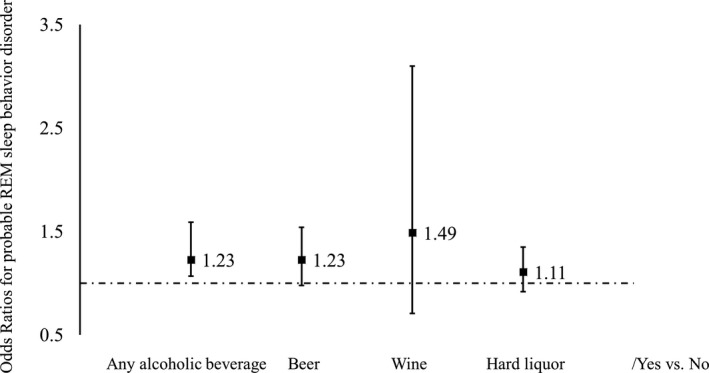Figure 1.

Odds ratios for probable REM sleep behavior disorder by types of alcoholic beverage1,2. 1Adjusted for age, sex, education level (primary, middle, or college and higher), income level (<500 RMB/month, 500–1000 RMB/month, or >1000 RMB/month), occupation (blue collar/white collar), physical activity (never, <4 times/week, or ≥4 times/week), smoking status(never, past, or current smoker), hypertension (no, prehypertension, or hypertension), diabetes (no, prediabetes, or diabetes), body mass index (<24 kg/m2, 24–28 kg/m2, or ≥28 kg/m2), plasma concentrations of triglyceride (quartiles), low‐density lipoprotein cholesterol (quartiles), high‐density lipoprotein cholesterol (quartiles), and urate (quartiles). 2Sample size and percentage of participants with probable REM sleep behavior disorder in any alcoholic beverage group: Negative (325, 4.95%)/Positive (316, 5.92%); beer group: Negative (515, 5.06%)/Positive (111, 6.07%); wine group: Negative (618, 5.38%)/Positive (8, 6.35%); hard liquor group: Negative (389, 5.08%)/Positive (237, 6.00%).
